An in-depth look at combat in Atelier Sophie 2
Although the Atelier series is, of course, primarily known for its alchemy mechanics, we shouldn’t forget that most of the entries in the series are RPGs at heart — and Atelier Sophie 2: The Alchemist of the Mysterious Dream is no exception to that.
A significant part of your average RPG — particularly those in the Eastern or console style — is combat. And so it’s fitting that combat mechanics in the Atelier series have evolved as much as the alchemy systems. Perhaps more so, given that various titles in the series place a stronger emphasis on either the “alchemy” or the “adventure” side of things according to the needs of the story.
To run down the differences in combat mechanics in each and every Atelier game would be well beyond the scope of a single article, since these systems are where some of the series’ most significant reinventions come between installments. But suffice to say that Atelier Sophie 2 takes a solid, reliable approach that a number of the more recent titles in the series have found effective: draw out the best bits of some previous games, and combine them with a few new features.
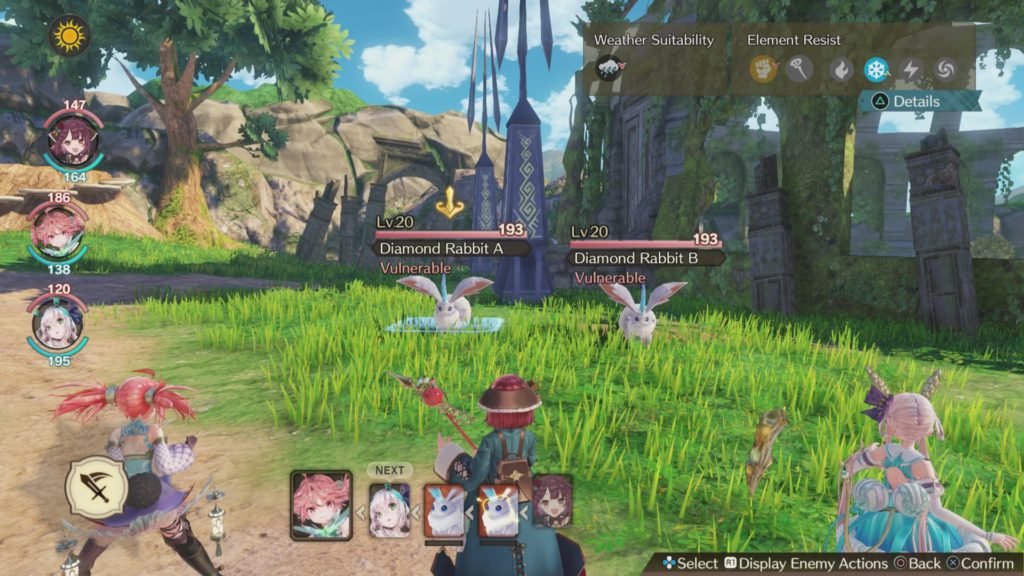
Starting a fight in the world of Atelier Sophie 2
Probably the most significant change compared to many other Atelier games is how the battle mechanics feel much more tightly integrated into the overall exploration side of things. Even in Atelier Firis, the most exploration-centric Atelier to date, we had a completely discrete battle scene that we switched to any time we entered combat — but in Atelier Sophie 2, battles simply unfold right where you start them, with your current location in any of the game’s exploration zones forming the backdrop to your conflict.
This is a small presentational feature that, for the most part, doesn’t affect gameplay directly all that much — but it does a hell of a job in making the experience feel a lot more immersive. While there’s still an obvious divide between “exploration” and “combat” gameplay — we’re by no means in the world of titles like Xenoblade Chronicles, where a transition between these two aspects is almost seamless — one gets the impression that this has been done for stylistic rather than technical reasons.
Had Gust wanted to Give Atelier Sophie 2 a quasi real-time cooldown-based combat system with character movement and positional elements, I feel like they could have done at this point. Turn-based combat has, however, pretty much always been a core part of the Atelier series, though, and thus changing angles so drastically — particularly in the middle of a subseries — would feel rather jarring.
And thus we have this: an approach that combines the series’ “symbol attack” system that it has used since Atelier Iris 3: Grand Phantasm with a more “immersive” feel. It’s very pleasant indeed — particularly as the sweeping camera work to introduce and conclude combat makes it clear Gust has made an effort to make the experience feel as coherent as possible.
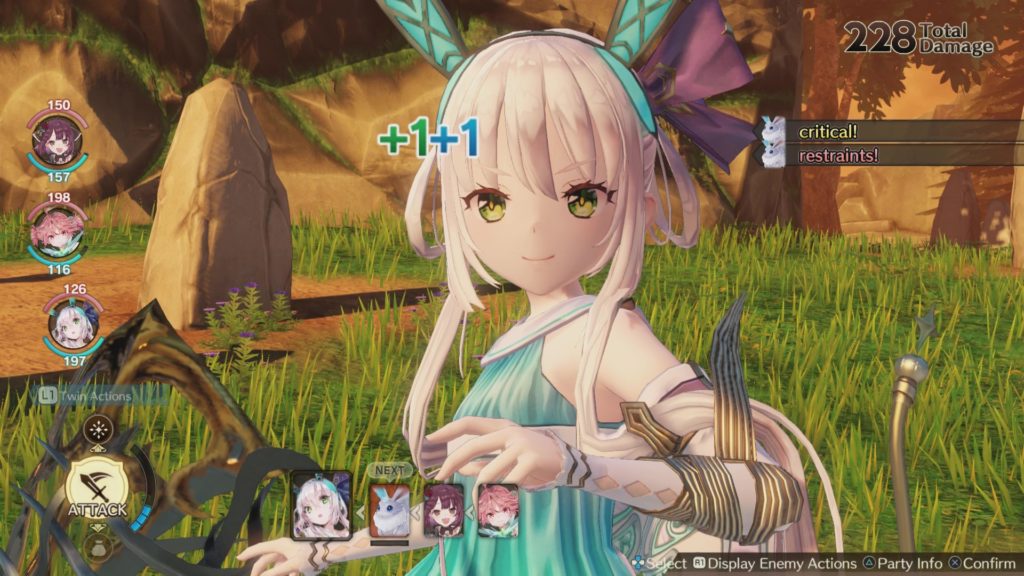
Now, onto the specifics. For the unfamiliar, a symbol attack system is a mechanic whereby enemies can be seen on the “field” screen and engaged in combat at the player’s choice — though in most implementations of this system, the “enemy symbols” will chase the player if they get too close. In previous incarnations of symbol attack systems seen in the Atelier series, one enemy symbol would typically represent an entire party of enemies, but here, things work a little differently — it’s a subtle difference, but one which works really well, and which adds to that aforementioned feeling of immersion.
What Atelier Sophie 2 does — and it’s honestly surprising this doesn’t feel like it’s really been tried before — is simple. When you start a combat, whether through accidentally coming into contact with an enemy or deliberately striking them with Sophie’s staff in order to start with an advantage, the enemy you engaged will enter battle with you — along with any other enemies that were nearby in the field within a certain radius.
In practice, this means that if there are a bunch of enemies close together in an area, chances are you won’t be able to pick them off one by one, because others will join the fray. For the most part, outside of enemies capable of summoning allies, no further enemies will join in once combat has begun, but this simple addition to the symbol attack formula makes choosing your initial targets feel much more important and tactical — as well as, again, adding to the feeling that everything you do is unfolding in one single, coherent world that you’re interacting directly with and having an effect on.
So once that battle begins, what next? Well, let’s talk about that.
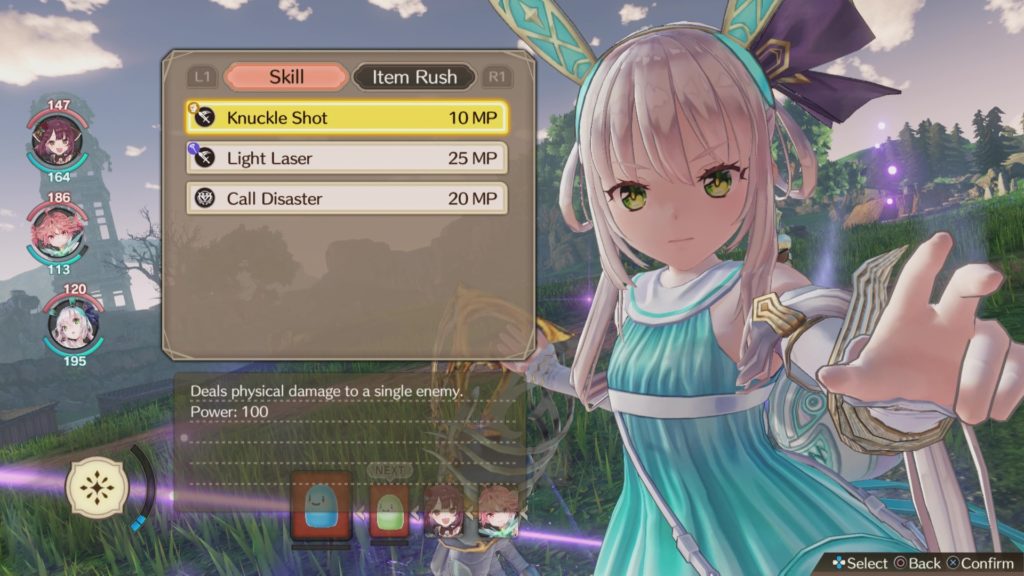
Fighting as only an alchemist can
Atelier Sophie 2’s combat is pretty strictly turn-based, with the next few turns indicated on a set of “cards” visible on the interface. Before confirming an action, you can see what effect the inherent “wait time” or WT for that action will have on the timing of that character’s next turn, thereby allowing you to make decisions about whether it’s worth using a more powerful but slow action, or getting some quick, weaker hits in in the hope of flattening your foes before they get a chance to act.
A variation on this system has been seen in most (though not all) Atelier games over the years — Atelier Iris 2, for example, bucked the trend with a gauge-based system somewhat akin to what Gust would later return to with the Blue Reflection series — and thus it should be mostly familiar to series veterans, and easy to understand for newcomers. Atelier Sophie 2 also features the return of a very welcome mechanic that adds some further depth to this system: the fact that certain skills and items cause “time cards” to form on the turn order gauge, meaning that they will either have a delayed effect, or trigger their effect once or more again after their initial usage.
Early in the game, you’re primarily the one who gets to play with this mechanic, but as you progress through the story and the challenges get stiffer, you’ll encounter enemies who are more than capable of throwing out these recurring attacks also. Not every Atelier game has provided you with the opportunity to counter or remove these, though in Atelier Sophie 2 a pair-up attack mechanic introduced after you’ve reached a major story milestone allows you to do just this, which is fun.
On a character’s turn, they have the opportunity to take one of several actions. A basic attack is exactly what it sounds like, though it’s worth noting that this is by no means a “last resort” action in Atelier Sophie 2 for when you have nothing better to do. On the contrary, the fact that many weapons have the ability to hit multiple times, plus the ability of the Burns status effect to inflict additional damage with every discrete hit, means that regular attacks can often be rather desirable to unleash — not to mention satisfying, as the multi-hit attacks are accompanied by some delightfully overblown and dramatic camera angles that really help the fights feel dynamic and exciting.
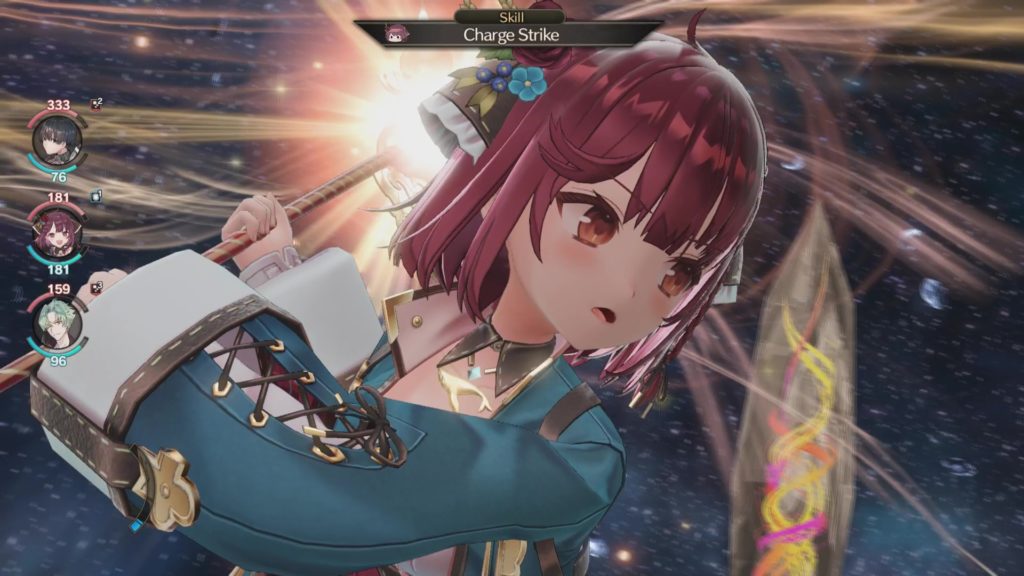
Much of your time in combat in Atelier Sophie 2 will likely be spent using skills. Since characters all start at at least level 20 — the level cap from the original Atelier Sophie — they begin the game with a decent range of different things to do, with various characters having pretty clear roles within the party, as well as specialisms in terms of the types of damage they are able to deal. Some characters are purely offensive in nature, with most of their skills focusing on dishing out damage in various ways; others have a mix of offensive and defensive skills, with buffs and debuffs consistently proving to be a very important and helpful part of the game.
Characters are also able to equip up to four consumable items (a limit which can be expanded later), each of which can have multiple uses. Not every character can use every item, however — certain things are so complex only alchemist characters can use them, for example, and an “equipment cost” mechanic keeps you from simply loading every character up with a full pack of the most powerful items. You’ll likely find, however, that items are one of the most reliable ways of inflicting elementally affiliated damage on enemies, as well as providing healing for the party — since relatively few characters have innate skills that can heal.
Both skills and items can be combined with a mechanic called “Twin Action” where, if a gauge is full enough, your current active character can perform an action then swap with an inactive “back row” character, who then performs an action immediately after them. This is effectively a replacement for the “Support Attack” mechanic seen in many other Atelier games; the main difference is that you plan out the use of this beforehand rather than choosing to engage it in the midst of an attack.
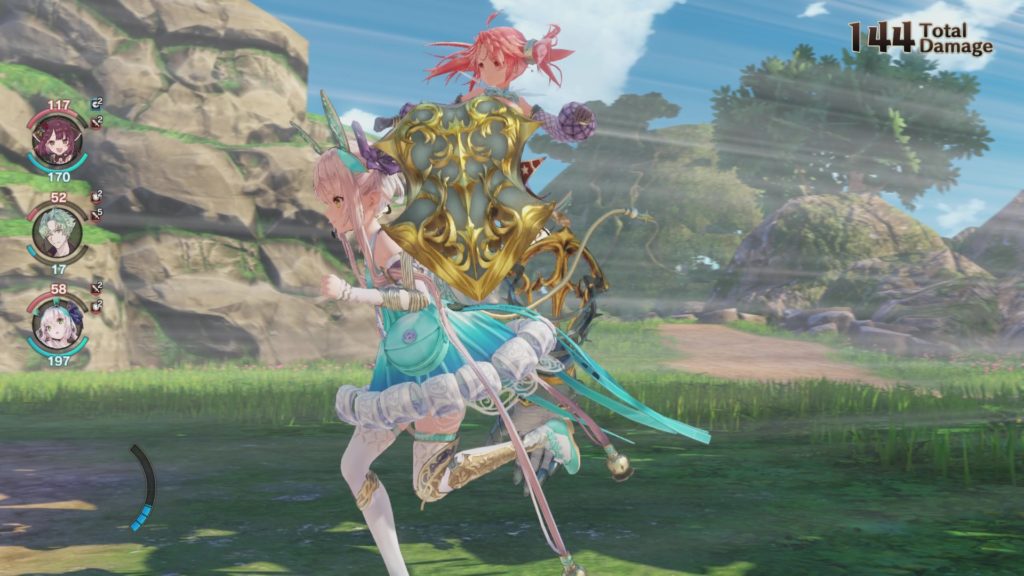
Initially, the Twin Action system is simply for performing two actions in quick succession and swapping the positions of two characters — you might want to swap out an injured frontline fighter with someone who is fully healed in the back row, for example — but as you progress through the game, you’ll unlock additional passive abilities that allow various good things to happen when these character switches take place. These are worth familiarising yourself with and optimising your formations accordingly.
Likewise, a variation on the Twin Action system can be used when an enemy targets a frontline character. Before the attack goes off, you’re given the option to switch out with a back row character, who will take a defensive posture, reduce some of the incoming damage and protect the original target completely. The passive abilities that work with offensive Twin Actions also come into play here, too, so again, it’s worth familiarising yourself thoroughly with what each party member is capable of as they advance in level.
The power of knowledge
So there’s plenty of fun to be had with the things that you can do in battle — what about the enemies? Well, they’re by no means content to just sit there and wait for you to blow them up with bombs and smack them about a bit with your big staff that has a knob on the end, either. In fact, besides the usual sorts of single-target and area-effect attacks you’d expect from your common-or-garden RPG enemy, the foes in Atelier Sophie 2 have plenty of other tricks up their sleeve, too.
Firstly is a sensitivity to the weather. Certain enemies will perform better or worse in certain weather conditions — and, conveniently, as you work your way through Atelier Sophie 2, you’ll unlock the ability to manipulate the weather in various different ways. You do need to keep paying attention, however, because some enemies can manipulate the weather right back at you, so you’ll need to stay on top of things.
Secondly is a mechanic where it’s possible for enemies to generate various auras. These are shields that massively reduce incoming damage, and which are capable of either completely blocking or reacting to incoming damage of a specific type. For example, an enemy with a physical aura may well counterattack if you hit them with a physical attack — and anything you hit them with will be massively reduced in effectiveness until you deal with the aura itself.
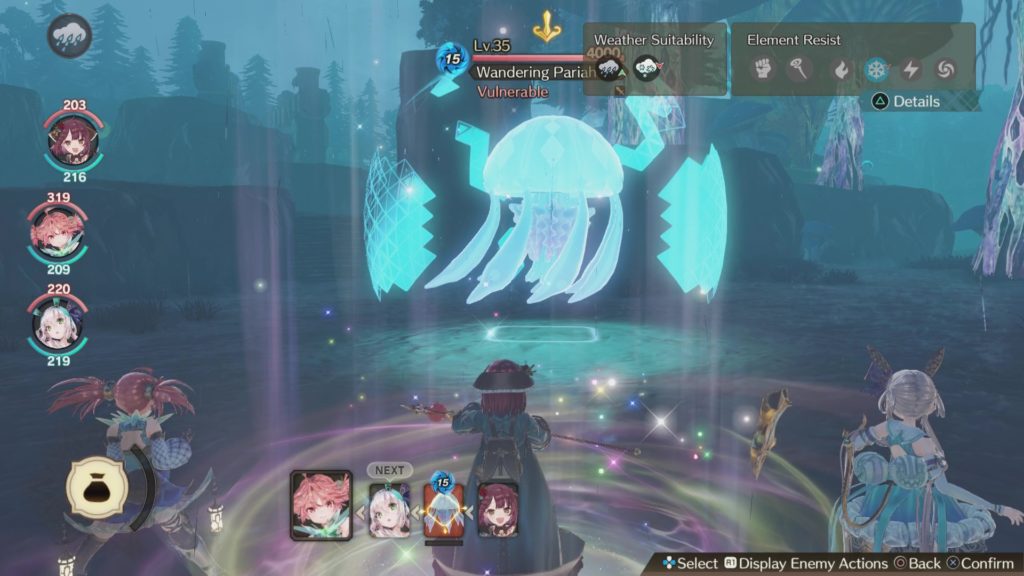
Thankfully, dealing with an aura is simply a case of hitting it until it shatters, at which point the formerly shielded enemy will have a short stunned period where you can absolutely unload on them — super-satisfying when we’re talking about bosses — but there are still ways you can ensure you’re fighting effectively and safely.
One of the best things about Atelier Sophie 2’s battle system is how much information it’s happy to provide you with. Unlike many other RPGs that take pride in being deliberately obtuse and encouraging players to figure things out for themselves — or resort to strategy guides and walkthroughs — Atelier Sophie 2’s excellent interface always gives you a full breakdown of what everything means, and what you might want to do about various situations.
In the case of auras, for example, pulling up the shielded enemy’s information will tell you not only what type of attack will counter the aura most effectively — thereby dealing more damage to it than usual — but also exactly what will happen if you hit it with something that it’s strong against.
On top of that, the game also gives you full information about exactly what all the different buffs and debuffs mean — along with how many stacks of each debuff an enemy has, which is a very helpful piece of information RPGs frequently forget to provide you with!
It’s an especially useful bit of knowledge in Atelier Sophie 2, since multiple stacks of a debuff can increase its effect massively; giving an enemy, say, five stacks of Burn will mean that every time you hit them they take additional damage that is considerably more powerful than a standard attack; five stacks of Frostbite, meanwhile, will hugely increase the damage they take from every attack you hit them with. Once you get comfortable with these features, you’ll learn how to absolutely rip through enemies that would have once been a rather daunting prospect to challenge!
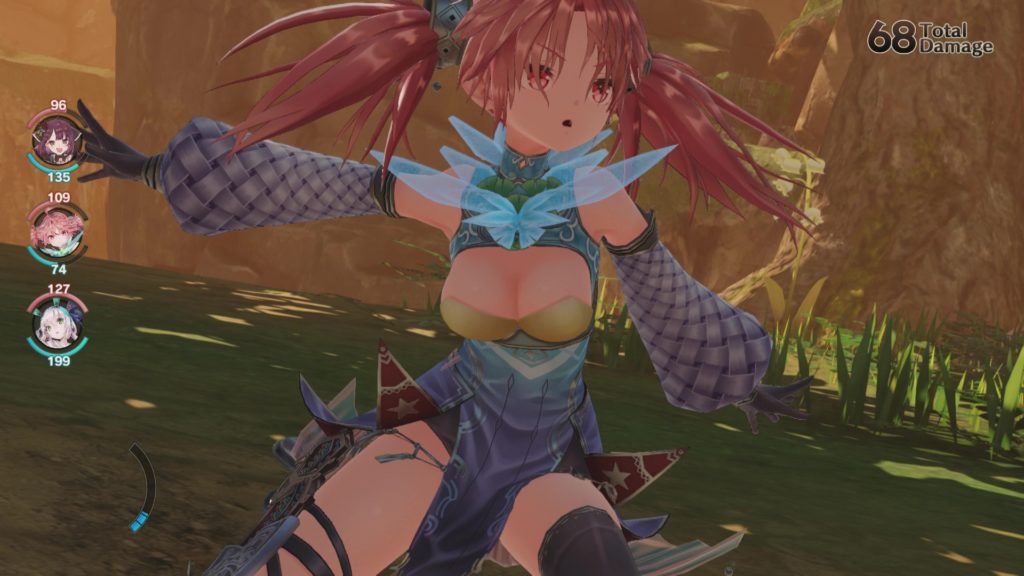
Conclusions
Battles in Atelier Sophie 2 are an absolute pleasure to participate in — and the nature of the game’s symbol attack system means that you can generally engage in them at your own pace according to your own priorities at any given moment. As we’ll talk a little more about next time, however, they’re an important part of your overall progression through the game — not just in terms of working your way through the story, but also in terms of beefing up your characters in various different ways.
But that’s a story for another time. For now, I’ve got a bunch of monsters on my shitlist in need of a good kicking — and a pocket full of bombs with which to deliver said kicking. Don’t wait up for me!
Atelier Sophie 2 is out now for Nintendo Switch, PlayStation 4 and PC.
Join The Discussion
Rice Digital Discord
Rice Digital Twitter
Rice Digital Facebook
Or write us a letter for the Rice Digital Friday Letters Page by clicking here!
Disclosure: Some links in this article may be affiliate links, which means we may earn a small commission if you make a purchase after clicking on them. This is at no additional cost to you and helps support Rice Digital!
- Letter from the Editor: passing the torch - June 30, 2023
- Super Woden GP 2 is looking promising - June 30, 2023
- Inti Creates is making a 32 bit-style Love Live action platformer - June 26, 2023







